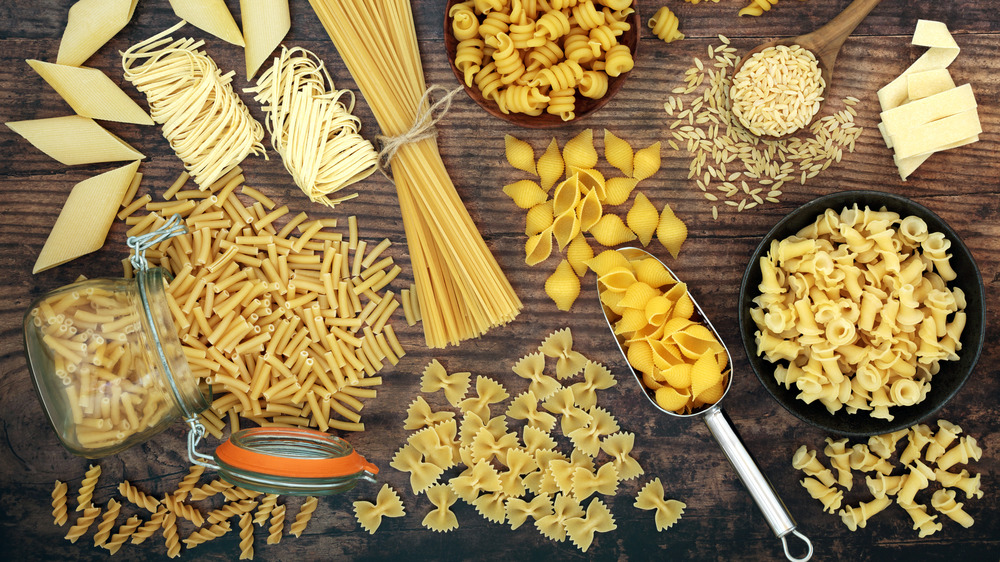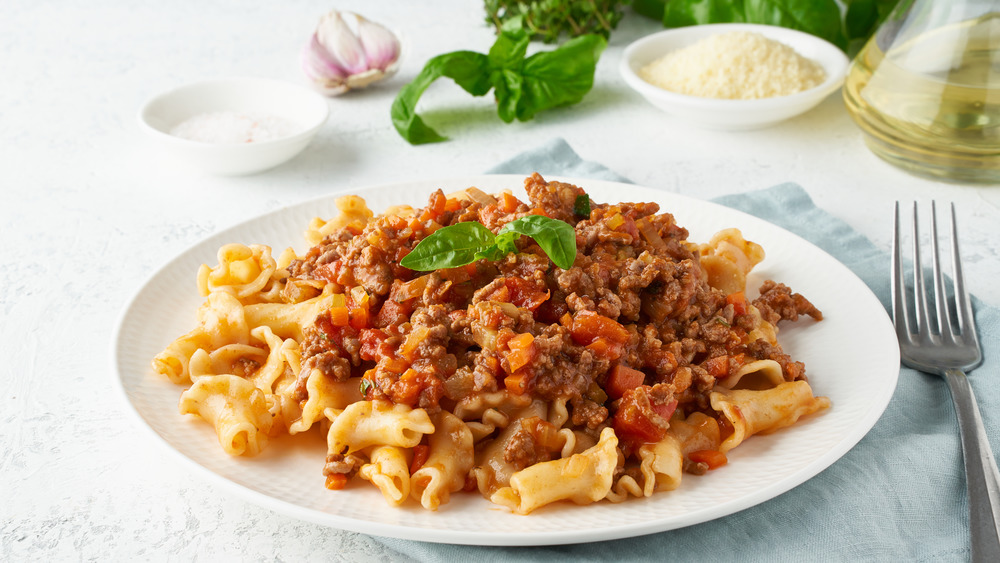The Biggest Mistake You're Making With Campanelle
If you were to only read the ingredients, you might think of pasta as a single category. However, a quick look at the pasta aisle of any supermarket suggests it isn't so straightforward. While you may think the large variety of shapes and sizes simply increases consumer confusion and the number of products to sell, there is actually a reasoning behind the large selection. Though Italy gets a bad rap for being chaotic and disorganized, (especially regarding bureaucracy as confirmed by Life in Italy), food is one aspect of life that is taken seriously.
Italy Magazine estimates that there are approximately 350 different pasta shapes once you start counting the size and textural variations. Among these distinct shapes, there are many specific to particular regions of the country, designed to highlight local ingredients (via Olive). Italy Magazine explains that each pasta shape is chosen with a purpose in mind, be it to hold weightier ingredients or to maximize the amount of sauce that coats it.
It's no coincidence that fettuccine Alfredo is practically a household name, but it seems a few things got lost in translation since the popular spaghetti Bolognese is not a pairing authentic to Italy (via Olive). Olive notes that meat sauces are best paired with flatter and wider pastas such as tagliatelle or pappardelle, which of course are harder to find (and pronounce!) than spaghetti.
How to pair your campanelle
While some pairings such as using small pasta in soups make intuitive sense, other shapes just seem like fun vehicles for sauce. This is true about campanelle, a pasta likely originating from Tuscany that is named for its bell shape (via Pasta Passion). Popular outside of Italy for its unique look, campanelle pasta, also called gigli or riccioli, has a few folds which are ideal for holding thicker creamier sauces made from dairy (via Food52). A simple tomato sauce won't do campanelle any justice!
Campanelle's heftier shape holds up to additions such as meat, fish, chunky vegetables, and beans (via Share the Pasta). The Daily Meal also recommends using campanelle in pasta salads since the ruffled texture and flute-like shape maintains its bite. You'll understand the fuss behind pasta and sauce pairing when you take a bite of campanelle and find your thick sauce has found its way into all the folds! So next time you're planning to make pasta for dinner, be sure to choose a match that will enhance your gastronomical experience.

